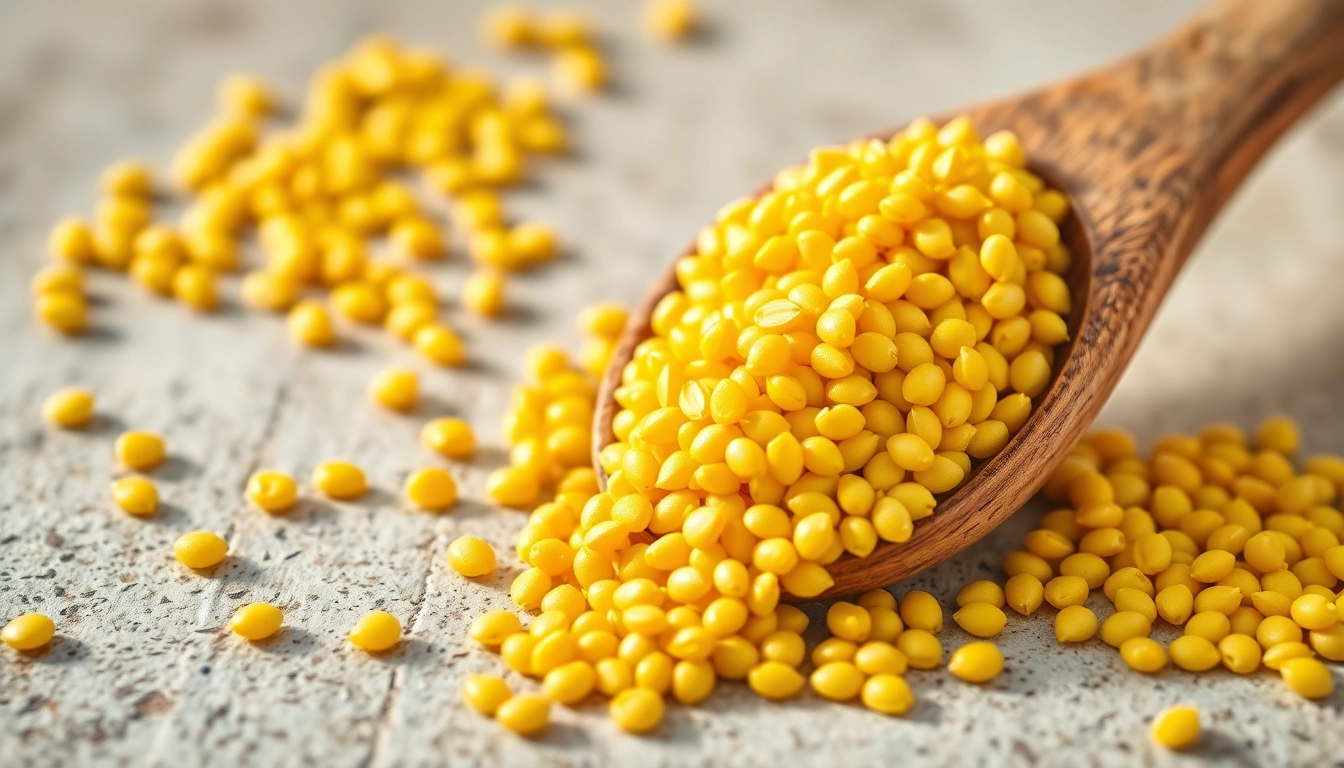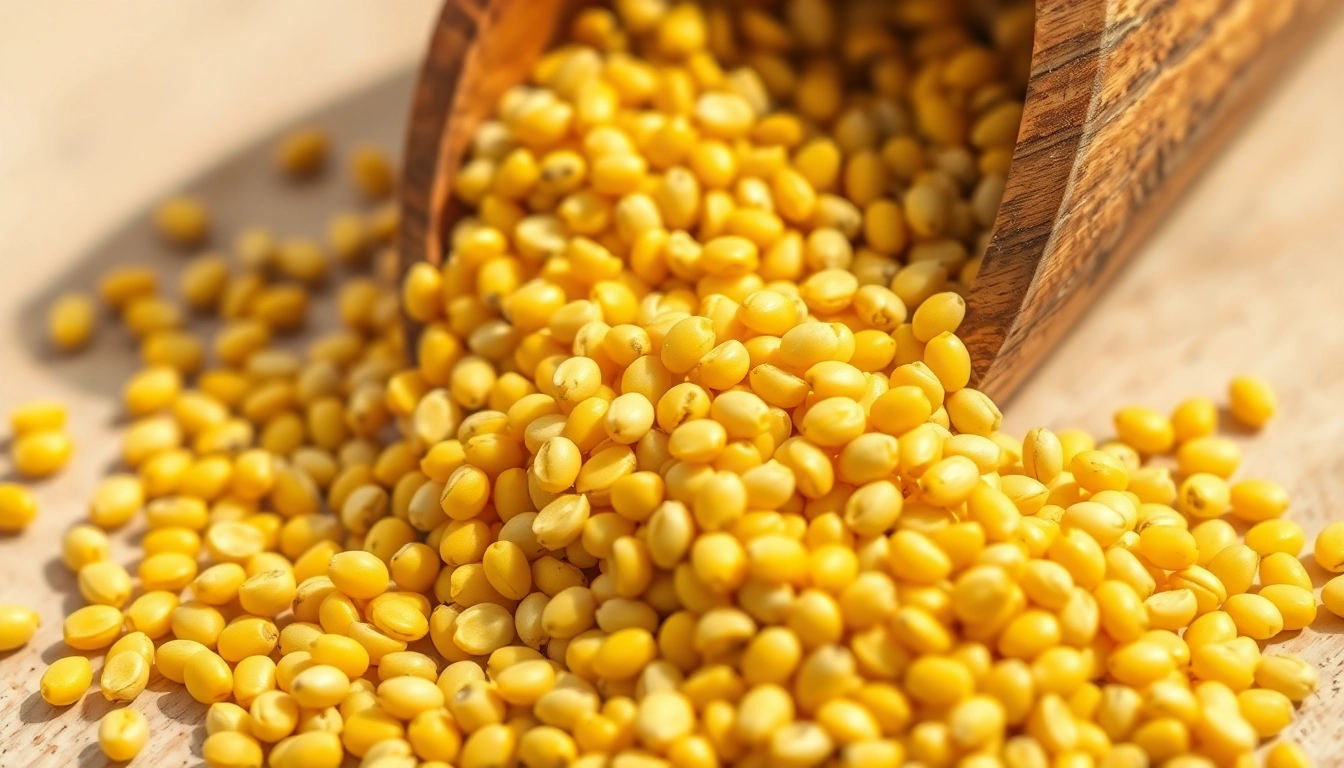Unlocking the Potential of Yellow Mustard Seeds: A Comprehensive Guide for Producers and Exporters
Yellow mustard seeds are a fundamental ingredient in global culinary traditions and a vital component in the spice industry. Known for their distinctive flavor, health benefits, and versatility, these seeds have garnered significant market attention. As an esteemed manufacturer and exporter of authentic spice products, Yellow Mustard Seeds continue to dominate the competitive landscape thanks to their quality standards and global market demand. This guide delves into the multifaceted aspects of yellow mustard seeds, including their health benefits, culinary uses, sourcing, cultivation, processing, packaging, and marketing strategies, equipping producers and exporters with actionable insights to maximize their business potential.
Understanding the Benefits and Uses of Yellow Mustard Seeds
Health Benefits and Nutritional Value of Yellow Mustard Seeds
Yellow mustard seeds are celebrated not only for their flavor but also for their nutritional prowess. Rich in essential nutrients such as dietary fiber, protein, omega-3 fatty acids, vitamins A, C, and E, calcium, magnesium, and antioxidants, these seeds contribute to overall health. Scientific studies highlight their anti-inflammatory properties, potential cancer-preventive effects, and ability to aid digestion. The presence of compounds like selenium and magnesium supports heart health by regulating cholesterol levels and blood pressure. Incorporating yellow mustard seeds into daily diets can enhance immune function and promote skin health, making them an indispensable superfood for health-conscious consumers globally.
Common Culinary Applications in Global Cuisine
Yellow mustard seeds are integral to diverse culinary applications worldwide. They are used whole or ground into powder as a foundational spice in Indian pickles, condiments, and curries. In Western cuisines, mustard seeds are essential in preparing mustard pastes and sauces, offering a sharp, tangy flavor. They are also employed in spice blends, marinades, and vegetarian dishes to impart flavor and texture. Their role extends into condiment production, where they serve as a key ingredient in mustard sauces, salad dressings, and meat preservation. The versatility of yellow mustard seeds makes them a staple in both traditional and modern recipes, fostering innovation across culinary borders.
Export Potential and Market Demand Overview
The global demand for yellow mustard seeds continues to rise owing to the increasing popularity of health foods, organic products, and ethnic cuisines. Countries like India, Canada, and Ukraine are leading producers and exporters, catering to markets in Europe, the US, and Asia. The rising trend of clean-label and gluten-free products further bolsters their demand. Market analyses predict a compound annual growth rate (CAGR) of 5-7% over the next five years, driven by expanding retail chains, increasing consumer awareness about health benefits, and evolving food formulations. Exporters with consistent quality standards and certifications will possess a competitive edge in tapping into these burgeoning markets.
How to Select and Source High-Quality Yellow Mustard Seeds
Key Indicators of Quality and Freshness
Quality yellow mustard seeds exhibit uniform size, vibrant yellow color, and an aromatic, nutty scent. Freshness can be assessed by visual appearance—free from discoloration, insect damage, or mold. Seeds should also be plump and firm, indicating proper drying and handling. Moisture content is critical; ideal moisture levels (around 7-8%) prevent mold growth and spoilage. Testing for microbial contamination and pesticide residues should be standard practice. Certification labels such as ISO, HACCP, and Organic guarantee compliance with safety standards, enhancing buyer confidence and reducing compliance risks.
Trusted Suppliers and Quality Certification Standards
Collaborating with reputable suppliers certified by recognized organizations ensures consistency and quality. Suppliers should adhere to standards like ISO 22000, HACCP, and Organic certification, indicating rigorous safety protocols. Certification by international agencies such as SGS or NSF further assures quality and authenticity. Engaging in transparent communication and requesting detailed quality analysis reports, residue testing results, and sample inspection are key to establishing trust with suppliers. SpiceNest’s established presence at major food exhibitions worldwide demonstrates its commitment to maintaining international quality benchmarks and fostering reliable trade partnerships.
Ensuring Sustainable and Ethical Sourcing Practices
Sustainable sourcing not only aligns with global environmental standards but also enhances brand reputation. Ethical practices include supporting local farming communities, implementing fair trade principles, and reducing carbon footprints through optimized logistics. Organic cultivation methods mitigate pesticide use, further adding to product appeal for health-conscious markets. Engaging with farmers through capacity-building programs and ensuring fair wages promote sustainability and long-term supply chain stability. Such practices are crucial in building a resilient business that meets international consumer expectations for ethically sourced products.
Best Agricultural Practices for Cultivating Yellow Mustard Seeds
Soil Preparation and Optimal Planting Techniques
Yellow mustard thrives on well-drained, fertile loamy soils with pH levels between 6.0 and 7.5. Proper soil preparation involves deep plowing to aerate the land and incorporating organic manure or compost to enhance fertility. Pre-sowing seed treatment with bio-fungicides reduces soil-borne diseases. Optimal planting involves sowing seeds at a depth of 2-3 cm with a row spacing of 15-20 cm, ensuring uniform seed distribution for balanced growth. Timing of sowing should align with climatic conditions—generally post-monsoon in India—allowing the crop to mature before adverse weather sets in.
Pest Control and Crop Management Tips
Common pests include aphids, flea beetles, and cutworms, which can be managed through integrated pest management (IPM) strategies. Use of biological control agents, crop rotation, and resistant varieties reduces chemical dependence. Regular monitoring and the application of eco-friendly pesticides, if necessary, ensure crop health. Proper irrigation practices—avoiding waterlogging and ensuring adequate moisture—are vital for optimal seed development. Weed control through mechanical or organic methods minimizes competition, promoting healthy growth.
Harvesting and Post-Harvest Handling to Preserve Quality
Yellow mustard seeds are typically harvested when 70-80% of pods turn brown and seeds are mature, usually 100-110 days after sowing. Harvesting should be done swiftly to prevent seed shattering, using mechanized harvesters or traditional methods like manual scything. Post-harvest handling includes threshing, cleaning, and drying seeds to moisture levels below 8%. Proper storage in airtight, moisture-proof containers in a cool, dry environment prevents spoilage and pest infestation. Implementing traceability protocols during harvesting and post-harvest processing ensures product integrity for export markets.
Processing and Packaging for Exporting Yellow Mustard Seeds
Cleaning, Drying, and Grading Processes
Processing begins with thorough cleaning to remove dust, stones, and foreign materials using vibrating sieves and air blowers. Drying is critical—reducing moisture to safe levels prevents mold growth, often achieved through mechanical dryers or natural sun-drying under controlled conditions. Grading is performed based on size, color, and purity, employing sieving and color sorting machinery. Uniform grading standards ensure consistency and meet international specifications, facilitating smoother export procedures.
Packaging Solutions That Maintain Freshness and Hygiene
Optimal packaging involves using moisture-proof, airtight materials such as multi-layered polyethylene bags, vacuum-sealed packs, or woven polypropylene sacks with inner liners. For high-value exports, controlled atmosphere packaging and nitrogen flushing extend shelf life. Clearly labeled packages indicate weight, batch number, manufacturing and expiry dates, and handling instructions, enhancing traceability. Proper packaging not only preserves quality but also complies with international food safety regulations.
Compliance with International Food Safety Standards
Exporters must adhere to standards like ISO 22000, HACCP, and global certifications such as ORGANIC or Non-GMO verified labels. Ensuring compliance involves rigorous documentation of processing procedures, sanitation practices, and quality testing. Regular audits and third-party inspections validate adherence, minimizing export rejections. Maintaining detailed records and certifications demonstrates commitment to quality, instilling buyer confidence across international markets and fulfilling contractual obligations seamlessly.
Effective Marketing Strategies to Boost Your Yellow Mustard Seeds Business
Creating Compelling Product Descriptions and Branding
Effective branding emphasizes the product’s purity, authenticity, and health benefits. Using engaging, keyword-rich descriptions that highlight certifications, sourcing practices, and superior quality can attract discerning buyers. Digital content, including videos and testimonials, enhance credibility. Packaging design should reflect authenticity and professionalism, aligning with market expectations. Transparently communicating the story behind the brand builds consumer trust and fosters loyalty.
Leveraging Trade Shows and International Expos
Participation in prominent trade shows like Biofach, Gulfood, and Anuga creates opportunities to showcase products directly to international buyers, distributors, and retailers. Preparing professional samples, catalogs, and compelling pitches is essential. Demonstrating certifications, quality systems, and sustainability practices differentiates your brand. Follow-up with contacts post-event to nurture relationships and convert leads into long-term partnerships. Spice Nest’s successful showcase at Biofach 2024 exemplifies how strategic participation enhances market visibility.
Digital Marketing and Online Sales Channels Optimization
Developing a robust online presence through a professional website, SEO optimization, and active social media engagement broadens reach. Content marketing—such as blogs, white papers, and recipes—educates buyers and positions the brand as an industry leader. Utilizing e-commerce platforms, B2B portals, and direct inquiries streamlines sales processes. Targeted digital advertising and email campaigns keep the brand top-of-mind among potential clients, driving sustained growth in export markets.



